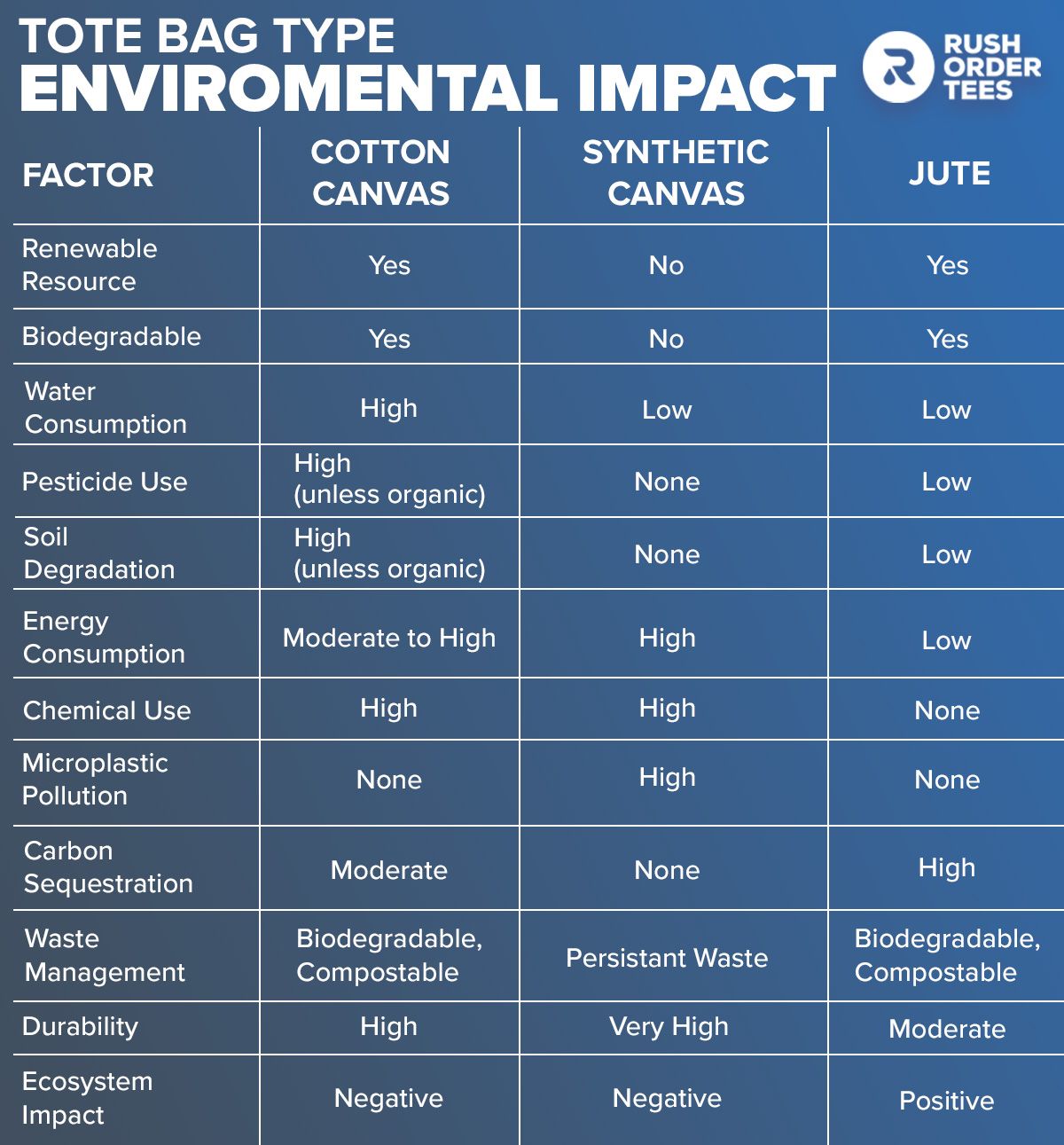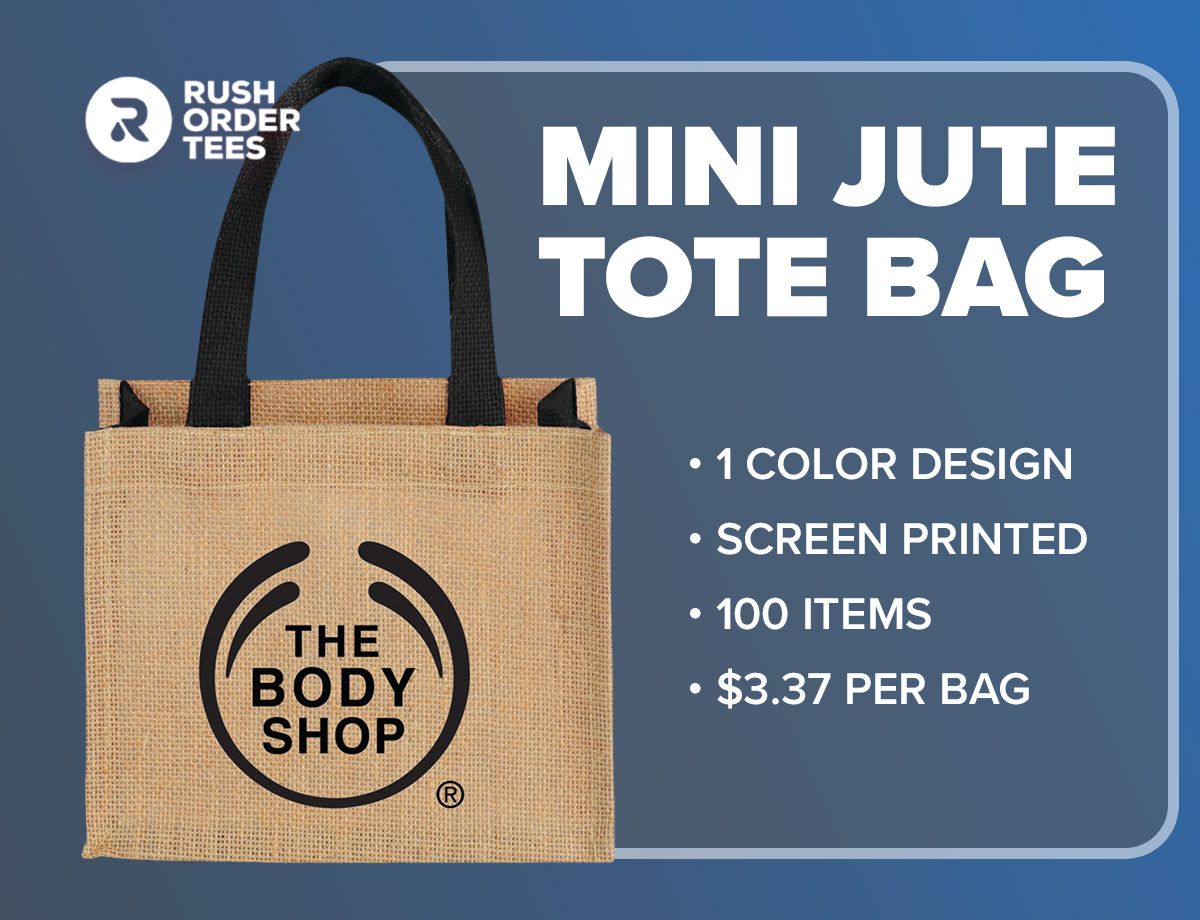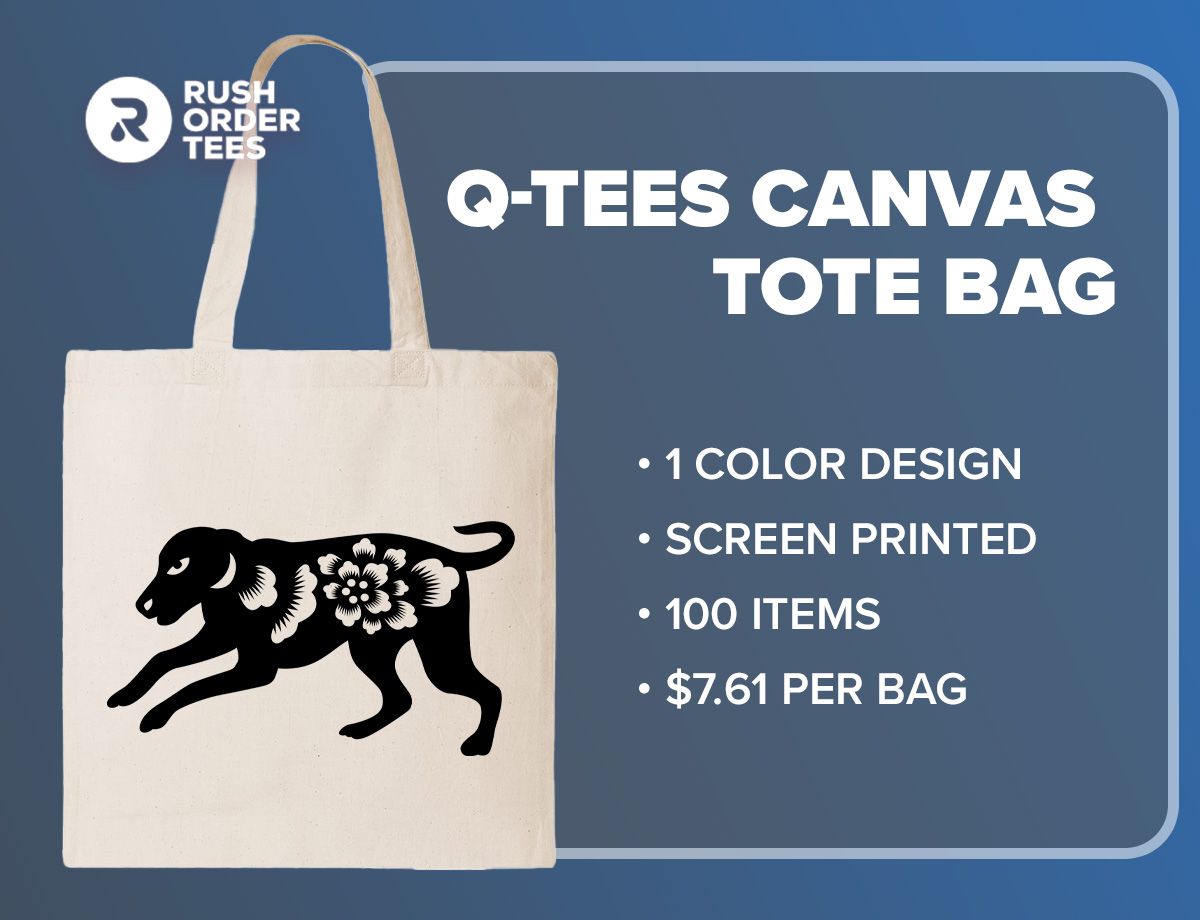
Replace single-use plastic bags with the ever-popular tote bag. These large, mostly unfastened bags are continuing to grow in popularity as consumers seek more environmentally friendly accessories for their everyday lives. Well-known for their versatility and durability, regardless of the materials they are made from, custom tote bags are both a stylish accessory and a practical solution to day-to-day living.
But what are the main differences between jute and canvas tote bags? Is one better than the other? Here, we’re breaking down everything you need to know for the ultimate tote bag showdown, covering material properties, durability, environmental impact, aesthetics, usage, and more!
Understanding Jute & Canvas Materials
In this section, we’ll be breaking down the differences between the two material types and the most common uses for each type of material.
What Is Jute?
Jute is a long, soft vegetable fiber from India and Bangladesh. It is spun into coarse threads to produce a strong and long-lasting fabric. Known as the golden fiber due to its color and high cash value, jute was traditionally used to make a wide variety of products such as hessian cloth, sacking, ropes, and twines but is now being used more broadly as an eco-friendly alternative to plastic bags.
What Is Canvas?
Canvas is a heavy-duty material made from cotton, linen, or even hemp. Its plain weave provides enhanced durability. Canvas is typically far more available and lower in cost than jute. When treated, canvas can be water resistant, making it a suitable option for tote bags ready to be used in all weather conditions.
Durability Comparison
When comparing the durability of jute and canvas, there are a few things to look at. We need to compare their tensile strength, their overall resistance to wear and tear, and their longevity in different conditions, for example, wet weather, dry weather, and abrasive environments.
Jute Durability
Strength: Jute fibers are strong and durable but not as robust as canvas.
Wear and Tear: Jute is more prone to wear and tear over time, especially when exposed to moisture, which can weaken and degrade the fibers and cause fraying.
Canvas Durability
Strength: Canvas is known for its high tensile strength and durability, making it ideal for heavy-duty use.
Wear and Tear: Canvas withstands wear and tear better than jute, and it can handle rough handling, heavy loads, and repeated use without significant degradation.
Overall Winner: Canvas is known to be more durable than jute.
Environmental Impact
While any type of alternative to plastic bags is considered to be a positive when looking at environmental impact, it’s also important to understand how eco-friendly each material type really is. For some companies and individuals, choosing the most environmentally conscious material is a big part of their ethos and buying behaviors. When measuring environmental impact, we need to look at a few different areas. These include whether they are a renewable resource, how biodegradable they are, their water and pesticide use, and their carbon sequestration. In this breakdown, we’re also looking at synthetic canvas, which can also be used to create tote bags.

Key Takeaways
- Cotton Canvas - this material is renewable and biodegradable but has high water and pesticide use unless organically grown.
- Synthetic Canvas - this material is very durable and uses less water and pesticides, but is not biodegradable and produces microplastics making it the least environmentally-friendly option.
- Jute - This material is renewable and biodegradable and has low water, pesticide, and energy usage. It also supports soil health and carbon sequestration.
Overall Winner: Jute is far more environmentally friendly than canvas.
Aesthetics & Design
One of the most important decisions for buying tote bags is how they look - and if personalized, what types of designs you can place on the bags. Both jute and canvas tote bags have a different look and feel about them, which can impact your impression of what you see as the best fit for your purpose.
Visual Appeal Of Jute Bags
Jute bags use their natural, rustic appearance as the center point of their sales pitch. The coarse, textured surface of jute gives these bags a unique and earthy charm, and the unprocessed look of jute is what aligns with the eco-friendly trends that we’re seeing a big uptake in. The visual association with nature and sustainability as a whole is a big selling point for jute.
Jute bags offer a neutral background with their natural beige and brown earthy tones. They can complement almost any outfit or setting. The fibers hold color well, making them easy to dye in various colors. Jute tote bags are also seen as elegant due to their clean lines and functional shapes.
Visual Appeal Of Canvas Bags
On an initial look, canvas bags have a smooth and clean surface, giving them a neat and polished appearance that other materials struggle to match. This smooth surface is what makes them so versatile and an excellent canvas (pun intended) for customization. Canvas bags are also available in a wide range of colors, from monochrome and neutrals to vibrant hues and pastels.
Like jute, canvas bags are often associated with eco-friendliness and this makes them visually appealing to the environmentally conscious customer.
Overall Winner: We’ve broken down our overall winner into two categories -
Best For Style: Jute bags offer the classic rustic look that canvas is unable to replicate.
Best for Customization: Canvas bags are a clear winner for customization options due to the wide array of colors available and the ability to screen print, digital print, embroider, heat transfer, and more.
Usage & Practicality
Understanding the practical uses of jute and canvas tote bags and where one may succeed more than the other is a great way to learn which material is the right choice for your needs.
Everyday Uses
Jute bags have a wide range of practical use cases including shopping, casual outings or even to dress up or dress down your attire for a day to night look.
Canvas bags on the other hand, are likely more suited to carrying items like notepads and pens for school and the office, making them very convenient and practical.
Specialized Uses
Imagine walking into your favorite local farm store or eco-friendly outlet - pair your outfit with a jute bag and you’ve got a great look. This is also perfect for eco-friendly stores to sell as shopping bags for their customers, making sure that your sustainable ethos carries through from your store to your customer’s home.
Overall Winner: We have broken this down into two categories -
Best For Heavy Duty: Canvas bags are best for heavy-duty tasks, making them perfect for trade shows and office use.
Best For Transitional Wear: Jute bags can casually transition between day and night, making them more of a fashion accessory.
Cost & Value
The cost and value of jute and canvas can influence your decision on which products are the right fit for your needs. This will also depend on whether or not you decide to customize your tote bags.
Jute Bag Cost
Without Customization - a basic, unbranded jute bag will usually range from $2 to $5 per bag, although this will vary based on size and quality.
With Customization - Adding custom designs, logos, or prints can increase the price to up to $10 per bag, depending on the decoration method, complexity of the design and the number of colors used.
Example -

Canvas Bag Cost
Without Customization - Non-customized tote bags can cost between $1 and $4 at the low end. This is when they have a simple design with no additional features. More durable materials or pockets, closures, or even branded could be anywhere up to $25 per bag.
With Customization - Customized options, including screen printing or embroidery, can range from $5 to $15. Prices depend on the design complexity, print area, and material quality.
Example -

Overall Winner: The most cost-effective option for a single order is jute bags however, as canvas bags are more durable, you may find yourself having to replace jute bags more regularly.
Conclusion
In conclusion, the choice between jute and canvas tote bags ultimately depends on personal preferences and priorities, as each material offers distinct advantages. Jute bags stand out for their environmental benefits, being renewable, biodegradable, and low-impact in terms of water and pesticide usage. Their rustic aesthetic appeals to those seeking a natural and eco-friendly appearance, making them an ideal choice for environmentally conscious consumers and fashion enthusiasts who appreciate a versatile accessory that can transition from day to night.
On the other hand, canvas bags are favored for their durability, strength, and broad customization possibilities. They are well-suited for heavy-duty tasks and offer a polished look that can be tailored to individual tastes through various design options. Despite their higher environmental impact, particularly in the case of synthetic canvas, their longevity can provide better value over time, reducing the need for frequent replacements.
Ultimately, the decision between jute and canvas tote bags should consider factors such as environmental impact, intended use, aesthetic preferences, and cost. By understanding the unique properties and benefits of each material, consumers can make informed choices that align with their values and lifestyle needs, contributing to more sustainable and practical everyday living.

Sophie Brannon
About the Author
Sophie is the Director of SEO for RushOrderTees. She is a travel enthusiast, passionate sports fan, and rock music aficionado. She owns more black tees than there are days of the week.

